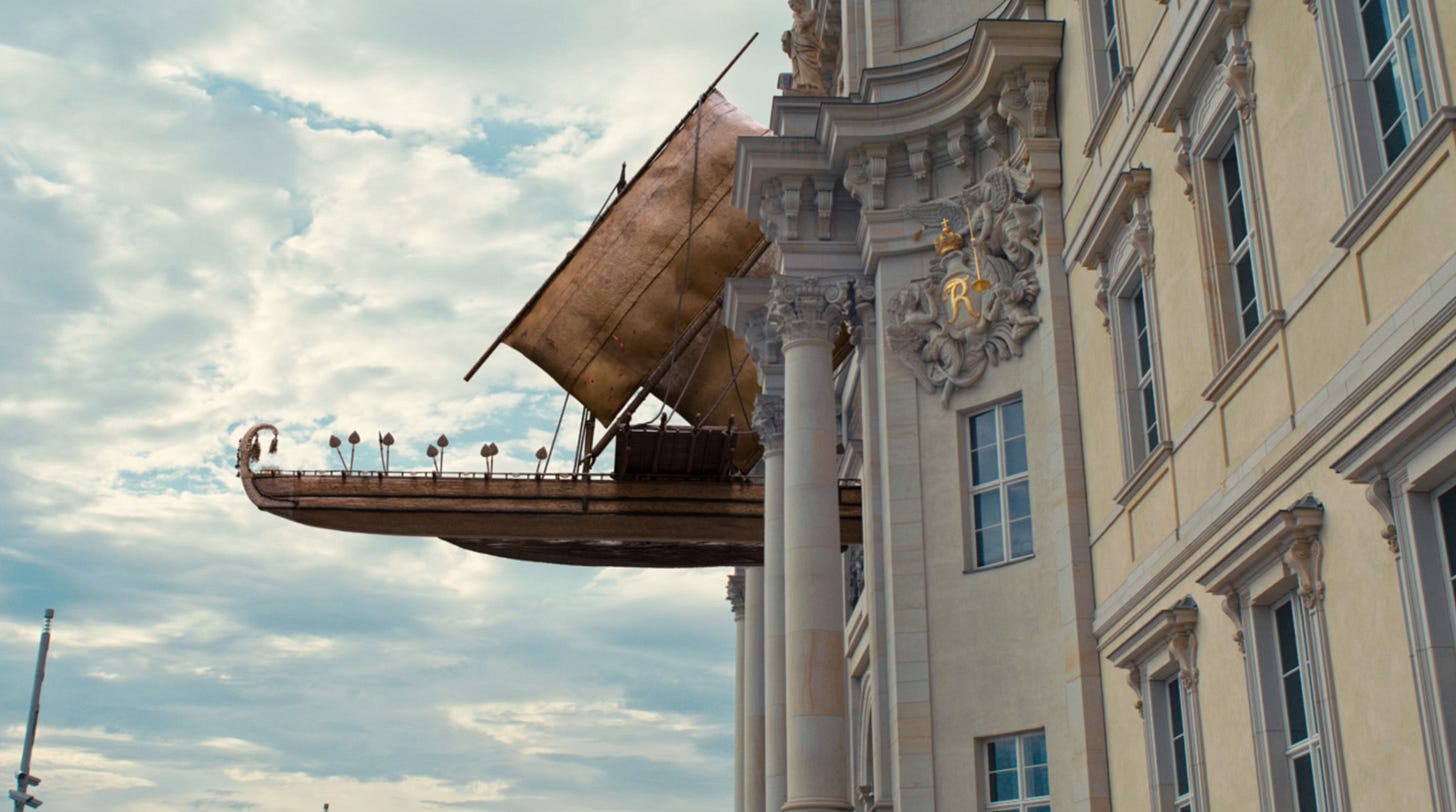“We don’t inherit the land from our ancestors, we inherit it from our children.”
Walking into the Showroom, this is the first thing I read as I open the press release. For a moment I am lost in my own literal perception, and then I begin to see full circle, foreshadowing the exhibition’s concentric pattern. Combining his Buddhist influence with the Indigenous beliefs of circular time, Tuấn Andrew Nguyễn has collaborated with original inhabitants of the island of Luf, Papua New Guinea to recover stolen lacunae of knowledge.
Since 1880, Papua New Guinea has been subject of much turmoil. Taken partly by German conquest and then later further contested by the United Kingdom and Australia, the Oceanic island sports many smaller ones such as Luf, each with unique and historically differing Indigenous populations that were affected greatly by these imperialist powers.
Three videos play on the first floor. The shades have all been pulled low to focus the light on two parallel films on each side of the room. Above the Sea, Against the Sky, 2024, displays a sleek, computer-generated form of a long thin boat, with intricate markings and a strong square sail. The screen is a thin rectangle, similarly proportioned to the boat itself, so that as I watch, I feel as though it is turning over and over on itself in an aquarium of sorts. On the other wall, directly behind me, plays When Water Embraces Empty Space, 2024, an eerie computerized video of the same boat sailing through a stark white museum. Its decaying wood and coffee stained sails seem to press against the marble background, until it finally bursts from the museum walls and pushes towards blue sky. Yet still, I have a fleeting impression that this boat will never be united with the one on the screen of Above the Sea, Against the Sky, 2024, as they both sail in the same direction in parallel.
Tuấn Andrew Nguyễn,When Water Embraces Empty Space (still), 2024.
In a smaller nook lies the third video, The Encounter, 2024, a much longer documentary that sits down with each of the Luf inhabitants that Nguyễn has worked with. One of the main Luf descendants, Stanley Inum, explains how this boat was stolen from their island by German men in 1903 after they committed a series of violent atrocities that killed most of the indigenous islanders. The boat, originally built for a chief’s burial, was taken by German traders after this genocidal attack and now resides in the Oceania collection of the Humboldt Forum, Berlin. The islanders, in turn, have lost their deep knowledge of how to build them.
In this story, the protagonists are not political states, but the ocean between them. When Water Embraces Empty Space aptly encompasses the vast stretches of blue that initiate colonial conquest and violence, and the vacant chasms they leave behind when stealing cultural artifacts. I particularly appreciated the constructive and reparative approach the exhibition took to its intention. In The Encounter, 2024, three Luf men are able to visit the boat in Germany and examine it more closely. I am struck by the contrast between their intimate knowledge of the vessel, and the erasure they have experienced. When Luf community member Enoch Lun is interviewed, he describes learning first about the boat from German tourists, who would come to the island and show him pictures of the exhibit across oceans. Yet, when he stands in front of the ship himself, he is able to quickly identify materials such as rattan, Indigenous wood, and many other features from his own cultural experience. The third Luf member, Fordy Stanley, is a boat-maker himself, and aspires to build a replica. The men discuss measurements quickly under their breath, as if fearful the boat may be snatched from under their fingers again.
Fordy Stanley’s craftwork can be found in pieces such as Oars, 2024, marking the return of cyclical knowledge of Indigenous boat-making to this island. The exhibition continues on the second floor, with an interview and a shorter video of the Luf men working on a recreation of the boat in A Boat is Back, 2024. As I walk up the stairs, I feel like I have voyaged to a new time zone. Maybe I am in Luf too, especially as the windows are light and airy, complementing the tropical forest that I see on the screen.
This exhibition succeeds most in making a concrete, lasting difference, and displaying it through a consistent narrative from multiple points of view. Nguyễn allows each Luf community member to use his art practice as a medium for their collective voice and creative solutions. In this, he echoes the Showroom’s approach towards collaborative production, and creates both art and legacy.
*Pictures courtesy of the artist and Edith Russ Haus for Media Art.





